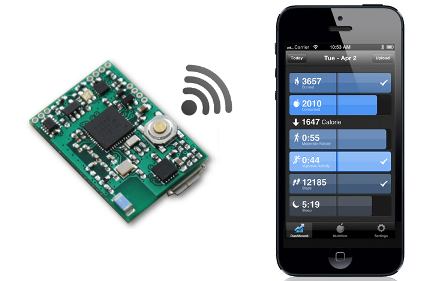SDK for creating MetaWear apps that run on node.js. Supported on Linux only.
This is a thin wrapper around the MetaWear C++ API so you will find the C++ documentation and API reference useful.
Also, check out the JavaScript examples.
Under the hood it uses Noble-Device and Noble for Bluetooth Low Energy communications. These third party libraries have been abandoned and we are currently using the @abandonware release.
Only Node 12 on Linux is supported for release 1.2.0
You need to make sure you have node and npm installed on your machine. Here's a quick rundown but you should google-fu proper steps for your specific OS and Node version.
We are currently supporting Node 12 only (node-ffi does not work on higher node versions -- this will be addressed in future releases).
Here are steps to install Node on Linux (Ubuntu). You have 3 options:
sudo apt install nodejs
sudo apt install npm
nodejs -v
This will install the latest Node. You may need to alias nodejs to node.
cd ~
curl -sL https://deb.nodesource.com/setup_12.x -o nodesource_setup.sh
sudo bash nodesource_setup.sh
sudo apt install nodejs
nodejs -v
This will install node v12. You may need to alias nodejs to node.
curl -sL https://raw.githubusercontent.com/creationix/nvm/v0.35.3/install.sh -o install_nvm.sh
bash install_nvm.sh
source ~/.profile
nvm install 12
nvm use 12
node -v
Check the latest version of NVM before you install (it might be higher than v0.35.3).
It is important to note that because our scripts use OS level Bluetooth libraries, it may be required to use sudo (or you will get a warning and the scripts won't work). You need to decide if you are ok to use sudo or not. If you are not, follow this guide
You also need to check that the version of node you are using is as expected for sudo:
$ node -v
v12.22.10
$ sudo node -v
v12.22.10
As you can see here, the sudo node version is not the same as the current user version. Here's a workaround. You can google-fu more about this topic.
n=$(which node); \
n=${n%/bin/node}; \
chmod -R 755 $n/bin/*; \
sudo cp -r $n/{bin,lib,share} /usr/local
Bluez 5.50 works but 5.54 might not work. Here's a good tutorial
If you are not using a BLE dongle, you need to make sure your system is working and supports Bluetooth 4.0+.
If you are using a BLE dongle, you need to make sure it's working. You can google-fu how to use tools such as bluetoothctl, hciconfig, btmon and more to confirm this. There is an example of how to specify a dongle in the example folder.
You have three options for installation:
The Mbient JavaScript SDK relies on Noble and Noble-Device for Bluetooth Low Energy communications.
You need to setup the relevant prerequisites for Noble and then install Noble. Make sure you use our versions of these libraries as the original packages have been abandoned.
Then you can simply install the MetaWear package lib with NPM using the command line:
npm install metawear
This step takes a long time as all the packages are installed and the MetaWear CPP library will be compiled on your machine. You may or may not need to update.
npm update metawear
You can install the metawear package straight from our repository by using:
npm install https://github.com/mbientlab/MetaWear-SDK-JavaScript.git
This step takes a long time as all the packages are installed and the MetaWear CPP library will be compiled on your machine.
We packaged everything for you already in this repository -- see package.json.
Make sure that when you clone this repository, that you clone the MetaWear-SDK-Cpp submodule with it.
git clone --recurse-submodules https://github.com/mbientlab/MetaWear-SDK-JavaScript.git
cd MetaWear-SDK-JavaScript
npm install
The installation step takes some time to install the packages and compile the C++ code in the submodule.
If you have any issues with the npm installation, make sure you are using the correct version of node, npm, nvm (if used), bluez, and that your machine is Bluetooth Low Energy compliant.
If you have any issues compiling the MetaWear-CPP-SDK (this is a post script that runs at the end of npm install), simply build it from source.
If you cloned the repo:
cd MetaWear-SDK-Cpp/
make
If you ran an npm command:
cd node_modules/metawear
cd MetaWear-SDK-Cpp/
make
Once the install is successful, you can run our example scripts in the example folder (see the example folder in our repository):
node led.jsPlease note that depending on your node and npm installation, you may need to run sudo (or use su -):
sudo node led.jsPlease note that the examples in our examples folder will use the local metawear libraries (as this repository is meant for development):
var MetaWear = require('../index')This is pointing to the local metawear Node.JS code.
Simply change it to this if using metawear as a package (dependency) in your own app:
var MetaWear = require('metawear');This means metawear would be installed as a dependency in the node_modules directory of your app.
You should familiarize yourself with our tutorials since there a few limitiations and other gotchas spelled out, such as the maximum number of simultaneous Bluetooth connections.
Require the metawear package:
var MetaWear = require('metawear');Discover the first MetaWear device seen:
MetaWear.discover(function (device) { ... }Or connect to a device with a specific MAC address:
MetaWear.discoverByAddress('cb:7d:c5:b0:20:8f', function(device) { ... }There are other options too, documented in Noble Device
After that, you must connect to the device and init:
device.connectAndSetUp(function (error) { ... }At this point you can call any of the MetaWear API's, for example, you can blink the LED green
var pattern = new MetaWear.LedPattern();
MetaWear.mbl_mw_led_load_p_pattern(pattern.ref(), MetaWear.LedPreset.BLINK);
MetaWear.mbl_mw_led_write_pattern(device.board, pattern.ref(), MetaWear.LedColor.GREEN);
MetaWear.mbl_mw_led_play(device.board);var MetaWear = require('metawear');
MetaWear.discover(function (device) {
device.connectAndSetUp(function (error) {
var pattern = new MetaWear.LedPattern();
MetaWear.mbl_mw_led_load_preset_pattern(pattern.ref(), MetaWear.LedPreset.BLINK);
MetaWear.mbl_mw_led_write_pattern(device.board, pattern.ref(), MetaWear.LedColor.GREEN);
MetaWear.mbl_mw_led_play(device.board);
// After 5 seconds we reset the board to clear the LED, when we receive
// a disconnect notice we know the reset is complete, so exit the program
setTimeout(function () {
device.on('disconnect', function () {
process.exit(0);
});
MetaWear.mbl_mw_debug_reset(device.board);
}, 5000);
});
});Tutorials can be found here.



